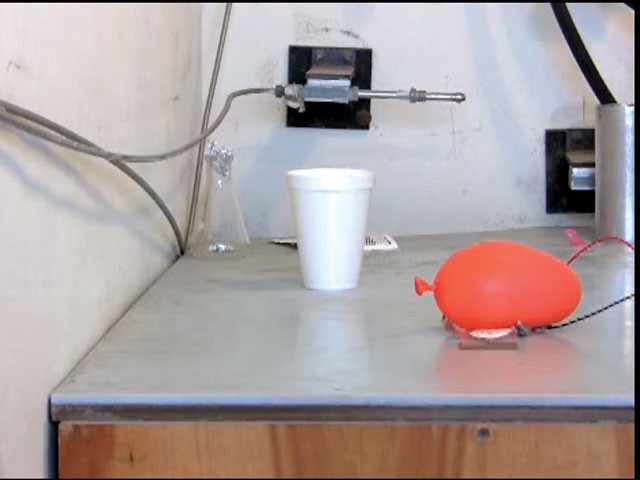Spokane Valley resident John D. Raymond was taken into police custody on Jan. 4 after the FBI’s Joint Terrorism Task Force tipped off officials at the Spokane County Sheriff’s Office that he was in possession of bomb-making materials. When police raided his home on North McDonald Road, Raymond led them to an estimated half-pound of triacetone triperoxide (TATP), one of the powerful explosives used by Nigerian terror suspect Umar Farouk Abdul Mutallab on a Northwest Airlines flight on Christmas Day. (Raymond insisted, though, that he hadn’t made an explosive device.) The incident shut down the neighborhood for nearly four hours.
Raymond was taken into custody on felony charges of unlawful manufacture/ possession of an incendiary device. He appeared in Superior Court the following day.
WHAT IS THIS STUFF?
Acetone peroxide is an organic compound that takes the form of a white crystalline powder. It’s also an industrial byproduct. But since the end of the 19th century, triacetone triperoxide (TATP) has been studied and used for its highly explosive qualities. In the last few decades it has become the preferred explosive among value-minded terrorists, as it can be made relatively easily using ingredients found at local drug and hardware stores, and it is extremely difficult to detect (it doesn’t have the same fingerprint of more normal explosives such as RDX or TNT). It was used in “shoe bomber” Richard Reid’s unsuccessful attempt to blow up American Airlines Flight 63 in 2001. It’s also believed to have been used in the deadly 2005 London train and bus bombings, which killed 52 people and injured over 700.
HOW EXPLOSIVE IS IT?
Explosive materials are categorized by sensitivity (as primary or secondary explosives) and by velocity (as low or high explosives). Primary explosives will explode with minor heat or shock treatment — a drop of nitroglycerine can explode if it falls to the fl oor. Secondary high explosives, such as TNT or RDX, require a primary explosive to detonate them, but this makes them more stable and safer to handle. TATP is a primary high explosive, meaning it’s really sensitive and explodes really fast. A video online (see still images, left) shows a controlled explosion of a sugar packet’s worth of the stuff, which produces a loud bang and, within 1/100 th of a second, sends a forceful shock wave to the video camera 10 feet away.
TATP is about 83 percent as strong as TNT. And unlike the latter, TATP explodes via an entropic explosion, not an exothermic reaction. That means it doesn’t produce a lot of heat and flames but rather a burst of gas and shock waves. TATP also is highly sensitive to impact, temperature change and friction. When the crystals are dry, TATP can be detonated just by touching the material with a spatula. When the solid is damp, it is easier to handle, but it can still be detonated by a flame or spark. (This explains how terrorists can transport it onto airplanes and trains.) All in all, not something you want sitting around in your dresser drawer.
SO WHAT WAS JOHN RAYMOND THINKING?
Hard to say. Raymond told KREM that he was upset how his 2006 divorce was handled. “I lost everything,” he said. He apparently reasoned that possessing the explosive materials would get him in front of a federal judge, who might take a second look at the divorce proceedings.
At the same time, the Spokesman-Review reports that Raymond told police he intended to use the TATP for a cannon on the Fourth of July. “[But] I don’t recommended mixing up a batch for Independence Day celebrations,” quips a writer on GlobalSecurity. org, “because it’s easy to blow yourself up when you make it.”
Thanks to Dr. Rob Ronald, professor of organic chemistry at Washington State University in Pullman, for his help with this article.

















